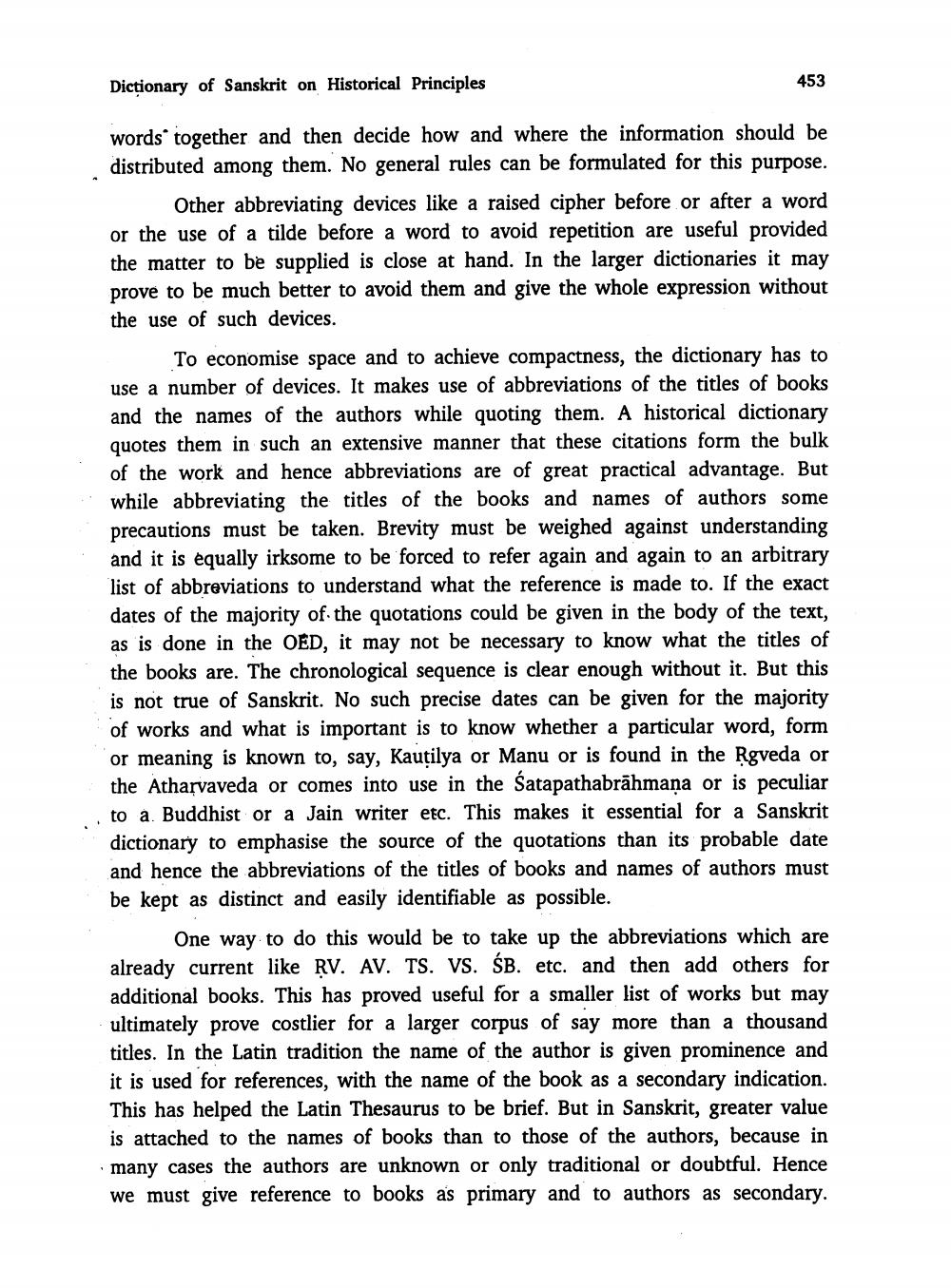________________
Dictionary of Sanskrit on Historical Principles
453
Orban
words together and then decide how and where the information should be distributed among them. No general rules can be formulated for this purpose.
Other abbreviating devices like a raised cipher before or after a word or the use of a tilde before a word to avoid repetition are useful provided the matter to be supplied is close at hand. In the larger dictionaries it may prove to be much better to avoid them and give the whole expression without the use of such devices.
To economise space and to achieve compactness, the dictionary has to use a number of devices. It makes use of abbreviations of the titles of books and the names of the authors while quoting them. A historical dictionary quotes them in such an extensive manner that these citations form the bulk of the work and hence abbreviations are of great practical advantage. But while abbreviating the titles of the books and names of authors some precautions must be taken. Brevity must be weighed against understanding and it is equally irksome to be forced to refer again and again to an arbitrary list of abbreviations to understand what the reference is made to. If the exact dates of the majority of the quotations could be given in the body of the text, as is done in the OED, it may not be necessary to know what the titles of the books are. The chronological sequence is clear enough without it. But this is not true of Sanskrit. No such precise dates can be given for the majority of works and what is important is to know whether a particular word, form or meaning is known to, say, Kautilya or Manu or is found in the Rgveda or the Atharvaveda or comes into use in the Satapathabrāhmana or is peculiar to a Buddhist or a Jain writer etc. This makes it essential for a Sanskrit dictionary to emphasise the source of the quotations than its probable date and hence the abbreviations of the titles of books and names of authors must be kept as distinct and easily identifiable as possible.
One way to do this would be to take up the abbreviations which are already current like RV. AV. TS. VS. ŚB. etc. and then add others for additional books. This has proved useful for a smaller list of works but may ultimately prove costlier for a larger corpus of say more than a thousand titles. In the Latin tradition the name of the author is given prominence and it is used for references, with the name of the book as a secondary indication. This has helped the Latin Thesaurus to be brief. But in Sanskrit, greater value is attached to the names of books than to those of the authors, because in many cases the authors are unknown or only traditional or doubtful. Hence we must give reference to books as primary and to authors as secondary.




